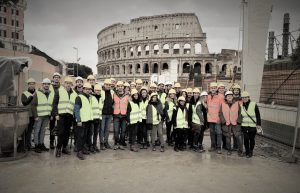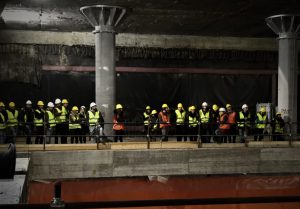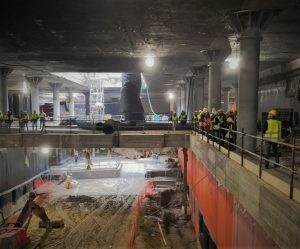Trenta studenti della magistrale in Ingegneria Civile guidati dalla prof. Francesca Casini hanno avuto il 28 gennaio scorso l’opportunità di visitare il cantiere della fermata della Metro C Fori Imperiali, in costruzione nel cuore di Roma.
Una visita tecnica agli scavi della metropolitana, programmata all’interno del corso di Scavi e opere di sostegno della laurea magistrale in Ingegneria Civile (guardane il profilo FB https://www.facebook.com/IngegneriaCivileUniroma2/ ) Gli studenti hanno così potuto vedere dal vivo i principali metodi di supporto degli scavi tra cui il jet grouting e gli ancoraggi.
La prof. Casini ha collaborato con Metro C per il sottopasso in corrispondenza dello snodo San Giovanni, per la realizzazione del quale è stato usato il metodo di congelamento del terreno descritto in frozen.uniroma2.it



